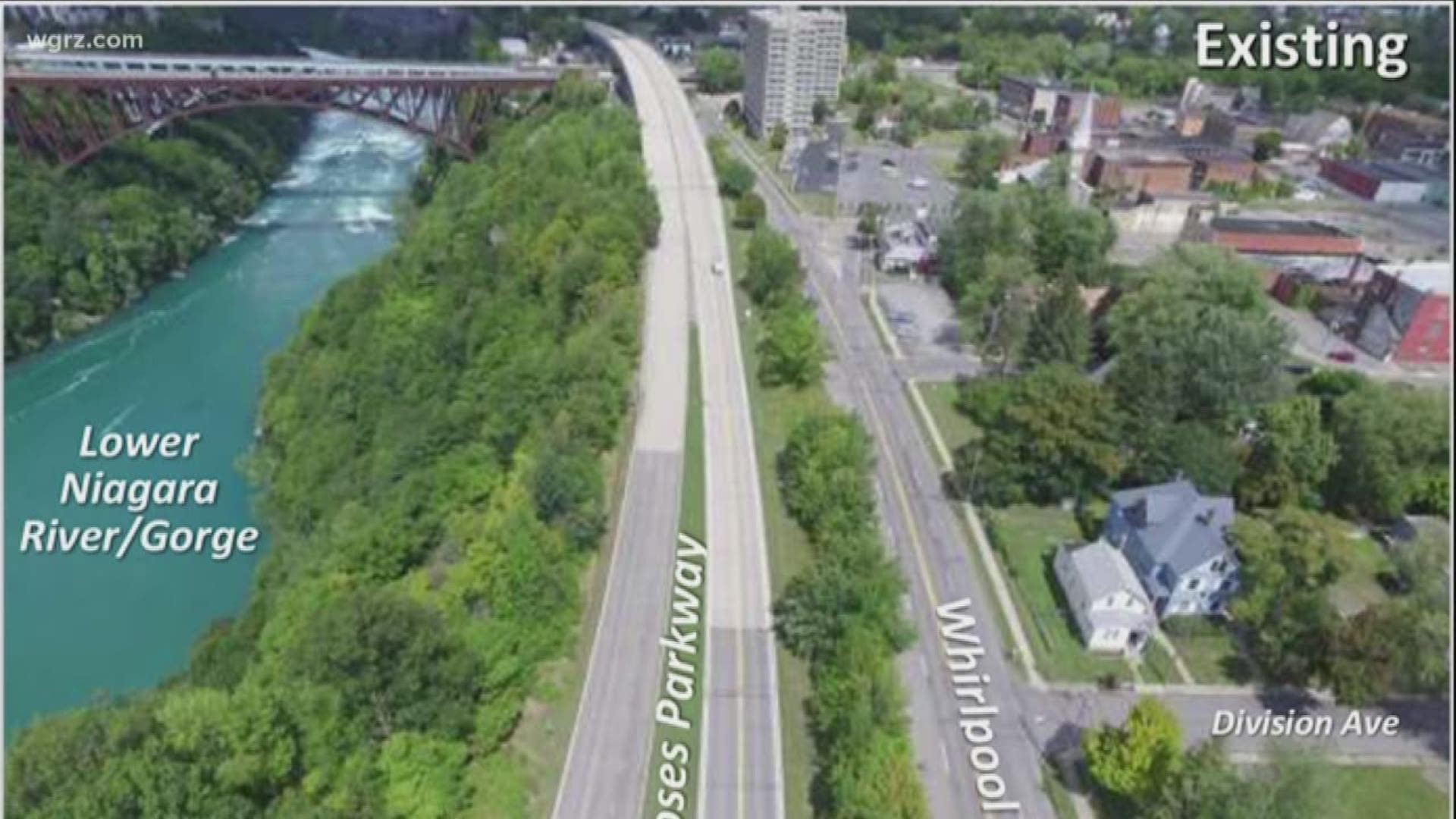NIAGARA FALLS, N.Y. — The rumble of jackhammers and the sight of falling concrete can be observed in the city’s north end, as construction crews make haste in the latest phase of a project that will remove what for generations was known as the Robert Moses Parkway, on the north side of Niagara Falls.
The expressway, which for 50 years has skirted the lip of the Niagara Gorge, will be replaced by a strip of parkland, with woods and walking trails as part of a $36 million dollar effort to expand Niagara Falls State Park, and open up the beauty of the gorge to visitors.
It is also hoped that the Parkway’s removal will help the few remaining North End businesses, and perhaps spawn others, by causing traffic to pass by their locations instead of zipping through that section of the city.
The work currently underway involves removal of a flyover bridge where the parkway rises above the Whirlpool Bridge crossing into Canada.
The work here will result in that international crossing being closed to vehicles for more than a month — from April 1 to approximately May 5, according to the Niagara Falls Bridge Commission.
Music to Hizzoner's Ears
The flyover bridge has been viewed by critics of the parkway as one of its most unsightly portions, and the dust and the noise being kicked up by its demolition were welcome sights and sounds to Niagara Falls Mayor Paul Dyster, who has long championed the Parkway’s removal.
"I think it's been almost 20 years since I've been involved in the parkway removal project. … This is something that's been an aspiration for the community for a very, very long time,” he said.
At the same time, crews are busy reconstructing the entire length of Whirlpool Street and a segment of Third Street to accommodate additional traffic upon removal of the parkway.
An attempt was made to do much of the work in the construction “off season,” during winter months, in order to accommodate tourists and do as little harm as possible to the lifeblood of the city’s economy.
Watching Where They Dig
In the meantime, crews are constantly on the watch for low level radioactive slag, commonly used as fill material when the parkway was built, such as what was found last summer during some construction in nearby Niagara Falls State Park.
Such materials, unfortunately, are a lasting legacy of the city’s long ago industrial heritage and exist in many places within its boundaries.
“There is a contingency plan to deal with whatever material might be discovered,” Dyster said. “As of a couple of days ago none yet had been found on this project, but it wouldn't be surprising some of it as the project moves north."
What's Ahead
According to the New York State Department of Transportation, the third and final phase of the project will involve removal of the parkway’s remaining pavement and restoration of its footprint with landscaping and vegetation, and it is scheduled to be completed in the late fall of 2020.
Moreover, Dyster hopes the project will become a lasting legacy.
“Just as we now look back on Frederick Law Olmsted and the work that was done in 1885 to create the park at the Falls, I’m hoping that our children, grandchildren, and great grandchildren will look at this expanded park along the Niagara Gorge and say, ‘Thank heavens somebody had the foresight to go forward with the project,’ ” he said.
MORE ON WGRZ.COM

